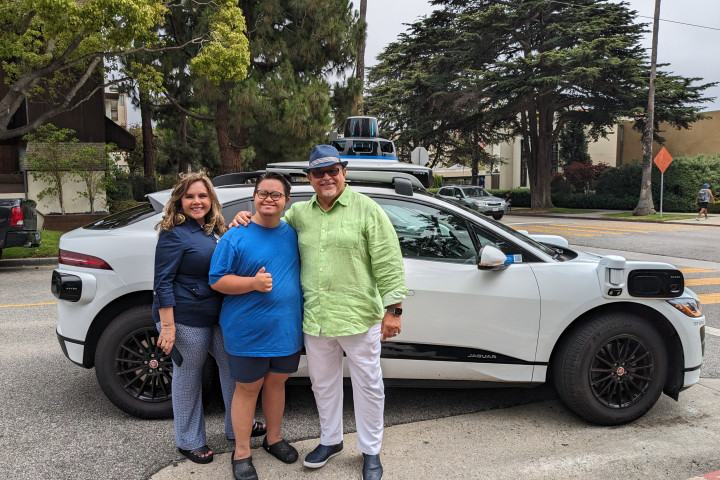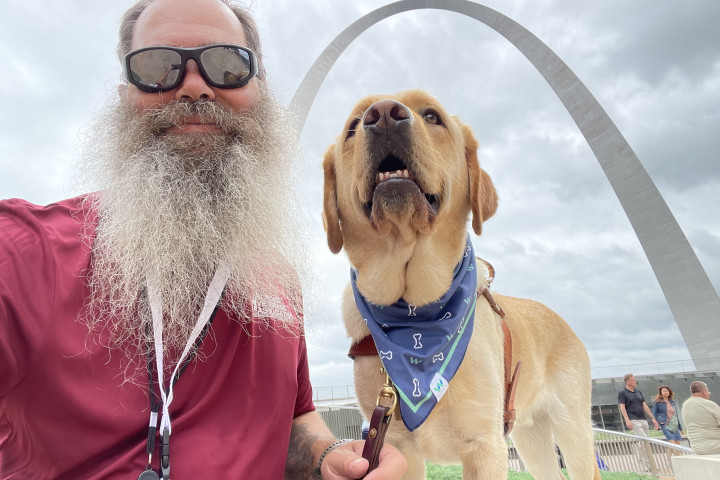How Tech Works Into Phoenix's First, Last Mile Solutions
July 9, 2020

Public transportation systems, such as buses and subways, are how millions of people are able to get around the cities in which they live. In 2018, Americans took 9.9 billion trips using public transportation. Access to public transit is especially important for people with physical disabilities or those who are blind and cannot drive. These systems are key to independent mobility.
In areas with sprawl and great distances between public transit stops exist, even getting to a bus stop can be difficult for riders. In urban planning, this is often called the “the first mile/last mile” problem.
New technologies, like fully self-driving vehicles, are helping to bridge the first mile/last mile gap to connect more people with transit.
We talked with Joe Gregory, manager of service planning and GIS for Valley Metro, the regional public transportation authority for Greater Phoenix, about how his city is taking on the first mile/last mile issue. We also asked him about how the COVID-19 pandemic is rapidly transforming public transportation.
What are the impacts on the population of Phoenix for those who do not have easy access to public transit?
Maricopa County is home to 4.5 million people who reside primarily in 27 cities and towns, including Phoenix. The county is vast at 9,224 square miles: larger than the states of Connecticut, Delaware and Rhode Island combined. Due to its lack of density and size, covering the area with public transportation is challenging. Currently, bus routes cover a 527-square-mile area.
Therefore, residents living in Maricopa County without reliable transportation have fewer options to get to work, school, healthcare or shopping centers. Despite public support for public transportation, metro Phoenix remains a car-centric culture with roughly 2% of the population living in a zero-car household. Half of the population lives within one-quarter mile of a bus stop. Based on the Valley Metro 2019 Origin and Destination Study, nearly 50% of transit riders reside in zero-car households. For residents without a car or access to transit, there are very few options for economical transportation, which can lead to a severely constrained lifestyle.
What conversations are happening around the first-mile/last-mile obstacle?
The first mile/last mile obstacle presents a challenge for most transit agencies across the country, including Valley Metro. Without a way to connect to transit service at the beginning and end of the trip, transit service is less appealing. Since Phoenix is laid out on a one-mile grid system, there are many neighborhoods without effective direct access to the arterial transit service. Because of this, bikeshare opportunities have sprouted up, especially near light rail stations and transit centers.
What solutions are being explored to address and solve this gap in transportation needs?
A number of different options are being explored to solve the gap in transportation needs. Traditionally, circulator routes have helped to supplement arterial fixed route bus service and Valley Metro has a number of local circulators helping with this effort. In the last few years, new mobility options such as micro-transit have emerged. Micro-transit allows smaller vehicles to serve neighborhoods using flexible and on-demand routes. Shared scooters and bikes fill a need in some dense areas with good infrastructure. Partnerships with transportation network companies, like Uber, Lyft and Waymo, have also been explored. Autonomous, low-speed shuttles were also beginning to be tested in the Phoenix area before the coronavirus pandemic hit.
How could fully self-driving technology play a role in complementing public transit networks?
There are a number of different applications, depending on the type of vehicle. Low-speed autonomous shuttles can serve city centers, education or medical campuses, and other large employment destinations. On-road autonomous vehicles can assist in the first/last mile problem through shared ride, micro-transit, or other connections to high capacity transit. They could also serve the paratransit community in the future. This technology has also been put to use for driver-assist technologies on buses to increase safety, though Valley Metro is not at the point of testing these options. Certainly, the highest cost to public transit is the operator of the vehicle. By implementing driverless vehicles, those savings can be used to expand service and provide more options for those who need costs to be driven down.
How has the pandemic changed discussion around transit needs for the future of Phoenix?
The first and most immediate change is the reduction in transit service schedules to preserve resources and capacity limits to comply with social distancing. We are installing more plastic shields to protect the operators from the public, which removes some of the human interaction with the public.
In the very near future, we will likely face service cuts due to a significant reduction in sales tax collections. In Arizona, sales taxes fund the infrastructure needs at all government levels: city, county, and state. The longer-term question is how soon will our riders accept shared rides and shared spaces. It’s unclear when the public will be ready to travel shoulder to shoulder in a crowded light rail vehicle again. With large scale public events on hiatus, it allows us time to survey riders about what will make them feel safer on public transit.
On a hopeful note, this historic time has sparked more discussion about shared roadways, sidewalk capacity, and other observations on the desire for human-scaled infrastructure. When people began sheltering in place to combat the spread of COVID-19, they quickly turned to walking, jogging, and bicycling around their neighborhoods for exercise and mobility.
In some cases, the sidewalks quickly became too crowded to socially distance. Cities such as New York City and Calgary began experimenting with closing lanes or entire streets to vehicle traffic as a way to prioritize human space on shared rights of way. It’s still early, but the hope is that with the combination of pedestrian priorities, and the return of transit use beyond essential trips, the U.S., we will move toward a more sustainable and scalable multi-modal transportation system.
Learn how fully self-driving cars behave around bicycles and other road users, taking their safety into account.
Sign Up
Join us in the most important conversations about how autonomous driving technology may shape the future of safety, mobility, community, and society.


